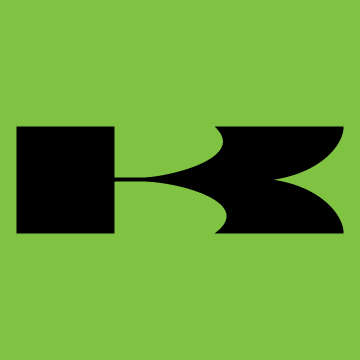Hello, new to the forum here. I have a 92 Polaris trailboss 350L. Overall the general shape is neglected, but is complete. Racks are straight, plastic is complete. I have been having trouble with it back firing out the exhaust when trying to start it, so I ran a compression test. It came back to about 75psi. I'm thinking this is low, usually I like to see at least 100 or better. I'm on the fence about rebuilding it, or if there are other things I should be looking at also. I already ordered a carb kit, and fuel shut off, air filter assembly. Compression was taken with the throttle wide opened, and four pulls on the handle. Everything works on this machine, and would like it for ice fishing. Anything I should look at before a top end?

92bosshog
92 Polaris compression
92bosshog
Discussion starter
23 posts
·
Joined 2017
- Add to quote Only show this user
Hello, new to the forum here. I have a 92 Polaris trailboss 350L. Overall the general shape is neglected, but is complete. Racks are straight, plastic is complete. I have been having trouble with it back firing out the exhaust when trying to start it, so I ran a compression test. It came back to about 75psi. I'm thinking this is low, usually I like to see at least 100 or better. I'm on the fence about rebuilding it, or if there are other things I should be looking at also. I already ordered a carb kit, and fuel shut off, air filter assembly. Compression was taken with the throttle wide opened, and four pulls on the handle. Everything works on this machine, and would like it for ice fishing. Anything I should look at before a top end?
32,053 posts
·
Joined 2014
With only 75lb of compression (normal is about 120 depending on the gauge and how the engine is cranked - anything between 110 and 150 is what I look for with my gauges)(I have at least 3 compression gauges and when in doubt, I check one against another), other than a new spark plug, start planning on doing a TE job - rings at the least - oversized piston and a bore job possibly
Before you order top end parts, get the top end apart and check the size of the piston that's currently in it - I can't hardly imagine a 92 having gone this long without the top end having already been worked on a time or two
Before you order top end parts, get the top end apart and check the size of the piston that's currently in it - I can't hardly imagine a 92 having gone this long without the top end having already been worked on a time or two
92bosshog
Discussion starter
23 posts
·
Joined 2017
Thanks for the advice. When it does start and run, it drives nice, has good power, but it just is a little hard starting and backfires through the exhaust. I'm sure it has been done once also, hoping not so it keeps parts "cheap". I am assuming the backfiring is from low compression?
92bosshog
Discussion starter
23 posts
·
Joined 2017
I got the cylinder tore down. The cylinder reads 80.20mm and the piston is at 79.95mm. overall shape is good, the top ring was carboned up, but not scared in anyway. The cylinder has no scratches either. I found pistons ranging from 80.50mm to 82.00mm in half millimeters. Should I just be safe and order a 81.00mm piston and fit that or do you guys think I can get a 80.50 and be safe?
3,999 posts
·
Joined 2013
Maybe someone can chime in with the original standard piston/bore size. That is the number you need to know how bad/good your cylinder is. It needs to be measured in several different places in the bore. Twice in each of 3 places. 90 degrees apart at the top (below the ring ridge) middle and bottom. Cylinders tend to get barrel shaped with use. With more stress on the piston skirt sides. If you don't have a telescoping gauge and the micrometer to match it for the bore, I would take it to a machine shop that does small engines and have it checked. If it's good, they should tell you and you can just run a ball hone, get new rings and gaskets and be on your way. If not then you will have to have it machined anyway.
With the age, I would also change the crankshaft seals while you have it torn down. 2 strokes use the crankcase as part of the induction system so if one of them is sucking air it will affect compression and performance. Just my thoughts for what it's worth.
With the age, I would also change the crankshaft seals while you have it torn down. 2 strokes use the crankcase as part of the induction system so if one of them is sucking air it will affect compression and performance. Just my thoughts for what it's worth.
32,053 posts
·
Joined 2014
I've rebuilt 100's of two strokes, based on your measurement the cylinder is almost worn to the first oversize (80.50mm), you should get an 81mm piston, have the cylinder bored and honed for clearance. Clearance is .0025 (25 thousandths of an inch) - almost any automotive machine shop should be able to do it.
Get the piston and take both the piston and cylinder to the shop that's going to do the work.
Get the piston and take both the piston and cylinder to the shop that's going to do the work.
3,999 posts
·
Joined 2013
Good for you, I wish I had a set. I have some micrometers, nothing big enough for a cylinder though. And no telescoping gauges.
They will have to take out enough to square up the cylinder if that makes sense. Straight cylinder walls. If your jug is out of round or barrel shaped it will need to be machined enough to make it straight again.
They will have to take out enough to square up the cylinder if that makes sense. Straight cylinder walls. If your jug is out of round or barrel shaped it will need to be machined enough to make it straight again.
32,053 posts
·
Joined 2014
Stock bore is 80mm, the first over size is 80.50 (20 thousandths (.0020)) and your cylinder is worn to .20mm, almost .0010" - chances are, it is worn more on the intake side just above the port (probably .25mm or greater)and it's 25 years old. Yes, I would bore to 81mm to get a good round straight cylinder and possibly good for another 25 years
2,937 posts
·
Joined 2011
In theory yes. In practicality no.
Sled guys weld em up. Raises compression a little bit.
Sled guys weld em up. Raises compression a little bit.
32,053 posts
·
Joined 2014
Lost me on that one - I can't find what you are calling a "decompression" hole in the head?
32,053 posts
·
Joined 2014
Now I'm lost even worse - the cylinder is filled with liquid and there is no holes from the combustion chamber to the outside of the cylinder. Those fitted with compression releases were always on the head. HELP ME - I'm need to know what it is you are talking about
2,937 posts
·
Joined 2011
Look up Polaris xc 800 decompression holes. It's the most common one I know of that were welded up for performance reasons.
16,254 posts
·
Joined 2009
Never had any dealings with sleds. I just learned something. :fing02:
32,053 posts
·
Joined 2014
Yeah - I just learned something too, but the 350L doesn't have a compression release that I can find in any of the service literature or on the parts breakdown
2,937 posts
·
Joined 2011
On the two strokes it's more of a bleed hole in the cylinder. No levers or valves.
16,254 posts
·
Joined 2009
aknawful, don't most of the sleds also use a power valve in the exhaust in combination with the decomp holes in the cylinder? I didn't see anything like that on the 350L??
2,937 posts
·
Joined 2011
Most sleds now do use power valves. I believe the original 2001 xc 800 liberty twin did not have powervalves but did have decompression holes.
When the big twins (800/900) came out they were bears to start when cold.
An old trick was to put the choke to full before shutting them down for the night. The theory was the extra fuel would wash the cylinders down of two stroke oil. Alowing it to turn over easier on the cold mornings.
When the big twins (800/900) came out they were bears to start when cold.
An old trick was to put the choke to full before shutting them down for the night. The theory was the extra fuel would wash the cylinders down of two stroke oil. Alowing it to turn over easier on the cold mornings.
16,254 posts
·
Joined 2009
Yeah, I did a quick scan of some of the threads and apparently those holes allowed some of the compression to leak off for cranking etc. The guys blocking them off were talking about it adding some bottom end power but that the difference was unnoticeable on the top end. I'd never heard of this before but it makes sense to let some pressure off when the piston moving slow as in starting but making no real difference at high RPM.
92bosshog
Discussion starter
23 posts
·
Joined 2017
Got it going finally. Runs well I would say, so I'm happy. It fires right up, but still is a little iffy on the idle part. Probably needs a carb cleaning. However, when I put it in reverse, it will die unless I'm holding the override button. Is this normal?
3,999 posts
·
Joined 2013
I won't say normal since it is not supposed to do that. It should run in reverse, but sputter and pop if you try to go too fast. Unless the over ride button is pushed. It is not uncommon however for the machine to die when shifted to reverse unless the over ride button is pushed. Both my 325 machines do the same thing. I added a speedo kit to one which replaced the reverse limiter and for a while it didn't die every time I shifted to reverse. Worked like it is supposed to for a while, now it comes and goes. I just get into the habit of holding the button when I shift to reverse.However, when I put it in reverse, it will die unless I'm holding the override button. Is this normal?
-
?
-
?
-
?
-
?
-
?
-
?
-
?
-
?
-
?
-
?
-
?
-
?
-
?
-
?
-
?
-
?
-
?
-
?
-
?
-
?
- posts
- 922K
- members
- 127K
- Since
- 2008
A forum community dedicated to Polaris ATV owners and enthusiasts. Come join the discussion about Rangers, Sportsmans, Scramblers, Magnums, and others. Research modifications, troubleshooting, maintenance, and more!



